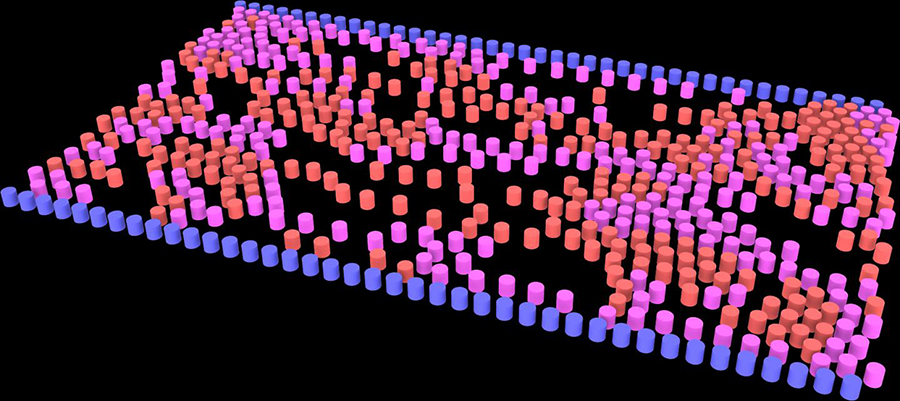
Kramer Explores Relationship Between Social Distancing, Pedestrian Flow
 We’ve all become accustomed to maintaining six feet of space between ourselves and the next closest person. But how does this impact the way we move through a space—does social distancing lead to pedestrian traffic jams? CEE undergraduate Kelby Kramer (CE ’22) recently presented research on this topic at the 73rd Annual Meeting of the American Physical Society's Division of Fluid Dynamics.
We’ve all become accustomed to maintaining six feet of space between ourselves and the next closest person. But how does this impact the way we move through a space—does social distancing lead to pedestrian traffic jams? CEE undergraduate Kelby Kramer (CE ’22) recently presented research on this topic at the 73rd Annual Meeting of the American Physical Society's Division of Fluid Dynamics.
Kramer’s research was not focused on potential virus transmission, but instead whether recommended social distancing could cause congestion. To test his theories, Kramer utilized a particle-based simulation created by CEE Assistant Professor Gerald J. Wang. “What was really fun is that [I used] a concept from traffic engineering to provide the framework for the experiments and our results,” Kramer says.
Working with Wang and several classmates, Kramer utilized simulations usually intended for modeling tiny particles to model much larger objects—people. Concepts from traffic engineering helped him to frame the initial question, hypothesis, and results. “We used tools from engineering fields across the size spectrum.”
“What was really fun is that [I used] a concept from traffic engineering to provide the framework for the experiments and our results,” Kramer says.
The initial result of testing showed similarities to what you’d find on a road—there was a direct relationship between pedestrian density in a corridor and people’s average velocities. Kramer then moved on to test how adding in social distancing impacted the scenario.
“We ran experiments through a range of desired social distances—from pedestrians requiring virtually no space around them (brushing shoulders) to pedestrians requiring about six feet of separation.” Not surprisingly, as the distance between people increased, pedestrian traffic jams also increased. He concluded that social distancing could cause congestion, or an impasse, even in hallways with a relatively low pedestrian density.
Kramer states that he was surprised by how quickly adding in the variable of social distancing led to a complete standstill in a corridor with normal pedestrian density. “I like to imagine our simulations occurring in the Porter/Baker hallway where you would only need about 100 people to cause complete gridlock if social distancing was followed,” he states, “that’s a far cry from the hundreds of students that would normally occupy the space pre-Covid.”
Professor Wang added that as schools and workplaces gradually return to their former occupational densities, it becomes all the more important to understand the connections between pedestrian density, social distancing preferences, and time-of-exposure distributions. He mentions that Kramer and other young students’ views are leading to innovative ideas.
“Undergrads often bring a ton of fresh perspective, incisive questions, and a boatload of energy to their projects.”